Art without Money
By Irina Echarry, Photos: Caridad
 For ten years, a commercial fair has been held in Cuba annually on busy 23rd Street in Havana in which arts and crafts mix. I’m referring to “Arte en la Rampa”, an event that takes place in a partially enclosed facility called Pabellon Cuba, in the downtown Vedado district.
For ten years, a commercial fair has been held in Cuba annually on busy 23rd Street in Havana in which arts and crafts mix. I’m referring to “Arte en la Rampa”, an event that takes place in a partially enclosed facility called Pabellon Cuba, in the downtown Vedado district.
With Cubans paying an admission of 2 pesos in domestic currency (8 cents USD) and foreigners 2 CUCs (about $2.40 USD), one can access a universe of useful products that wet the interest of would-be buyers, since our commercial retailers typically lack merchandise that is attractive and at the same time satisfies the needs of the home or the person who purchases them.
That’s why most of people, regardless of age, flock to the expo every year.
The problem, though, is that the prices of these products are astronomical for most Cubans.
A cute frog looks at us while shooting a jet of water from his mouth. This small ceramic fountain costs 200 CUCs or approximately 5,000 pesos in domestic currency. But the fountain is a luxury.
Shoes and items of clothing – which so many people lack for going to work, school or simply relaxing – all cost more than 25 CUCs, or more than 500 pesos: the equivalent of a high monthly take-home wage for a Cuban worker.
The fair’s school backpacks, colored pencils, earrings, necklaces, wallets – everything of good quality – seem to entice customers to buy them, but the prices are shocking, even the plants are expensive.
 On the bright side, good CDs, books and prints by famous artists can be acquired in the regular currency, something very difficult to find in other fairs or stores. Although the goods are not so inexpensive, they are within the public’s range of affordability thanks to this fair.
On the bright side, good CDs, books and prints by famous artists can be acquired in the regular currency, something very difficult to find in other fairs or stores. Although the goods are not so inexpensive, they are within the public’s range of affordability thanks to this fair.
Every afternoon, rock, trova or jazz concerts are held until 6:00 pm, which usually draw a good crowd.
Arte en la Rampa is open on weekdays from 1:00 p.m. to 7:00 p.m., and on weekends starting at 10:00 a.m. The fair lasts until August 30, when it concludes for the summer.
It is a viable option, like they say on the television commercials, where the sale of goods in domestic currency is praised, as if this were something unnatural. The fact is we are so accustomed to our dual currency – where the one that rules is the stronger one, the CUC – that the sale of goods in the regular currency that the state pays its workers seems something extraordinary.
Undoubtedly Arte en la Rampa is indeed worthwhile and that a lot of people will make purchases. Notwithstanding, it could be better – more egalitarian – and more people could be satisfied.
 For ten years, a commercial fair has been held in Cuba annually on busy 23rd Street in Havana in which arts and crafts mix. I’m referring to “Arte en la Rampa”, an event that takes place in a partially enclosed facility called Pabellon Cuba, in the downtown Vedado district.
For ten years, a commercial fair has been held in Cuba annually on busy 23rd Street in Havana in which arts and crafts mix. I’m referring to “Arte en la Rampa”, an event that takes place in a partially enclosed facility called Pabellon Cuba, in the downtown Vedado district.
With Cubans paying an admission of 2 pesos in domestic currency (8 cents USD) and foreigners 2 CUCs (about $2.40 USD), one can access a universe of useful products that wet the interest of would-be buyers, since our commercial retailers typically lack merchandise that is attractive and at the same time satisfies the needs of the home or the person who purchases them.
That’s why most of people, regardless of age, flock to the expo every year.
The problem, though, is that the prices of these products are astronomical for most Cubans.
A cute frog looks at us while shooting a jet of water from his mouth. This small ceramic fountain costs 200 CUCs or approximately 5,000 pesos in domestic currency. But the fountain is a luxury.
 Shoes and items of clothing – which so many people lack for going to work, school or simply relaxing – all cost more than 25 CUCs, or more than 500 pesos: the equivalent of a high monthly take-home wage for a Cuban worker.
Shoes and items of clothing – which so many people lack for going to work, school or simply relaxing – all cost more than 25 CUCs, or more than 500 pesos: the equivalent of a high monthly take-home wage for a Cuban worker.
The fair’s school backpacks, colored pencils, earrings, necklaces, wallets – everything of good quality – seem to entice customers to buy them, but the prices are shocking, even the plants are expensive.
On the bright side, good CDs, books and prints by famous artists can be acquired in the regular currency, something very difficult to find in other fairs or stores. Although the goods are not so inexpensive, they are within the public’s range of affordability thanks to this fair.
Every afternoon, rock, trova or jazz concerts are held until 6:00 pm, which usually draw a good crowd.
Arte en la Rampa is open on weekdays from 1:00 p.m. to 7:00 p.m., and on weekends starting at 10:00 a.m. The fair lasts until August 30, when it concludes for the summer.
It is a viable option, like they say on the television commercials, where the sale of goods in domestic currency is praised, as if this were something unnatural. The fact is we are so accustomed to our dual currency – where the one that rules is the stronger one, the CUC – that the sale of goods in the regular currency that the state pays its workers seems something extraordinary.
Undoubtedly Arte en la Rampa is indeed worthwhile and that a lot of people will make purchases. Notwithstanding, it could be better – more egalitarian – and more people could be satisfied.
Click on the thumbnails to see all the photos in this gallery


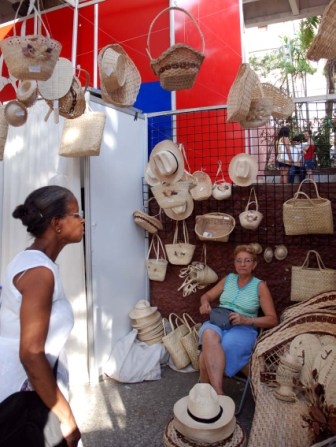
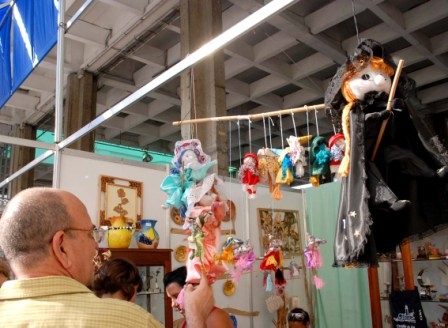
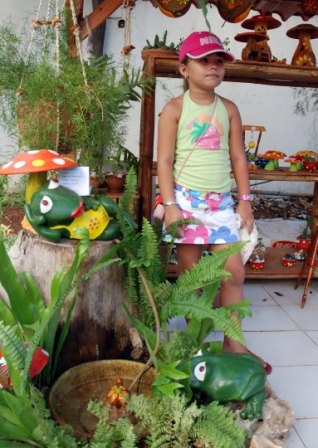
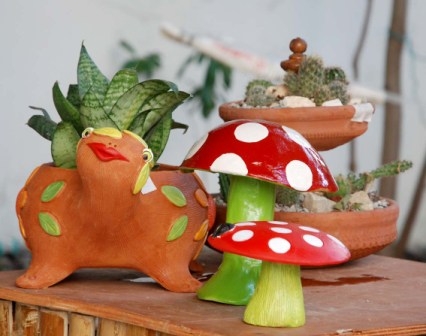


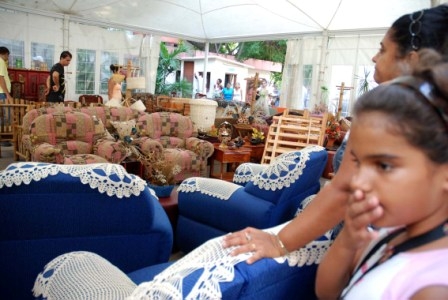
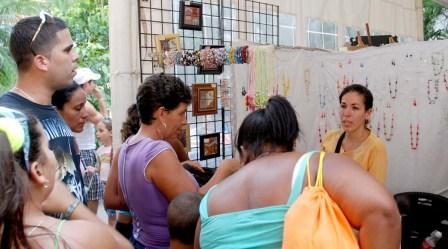
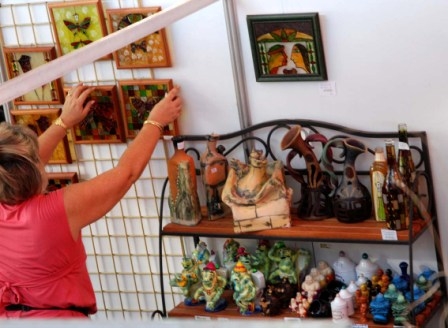

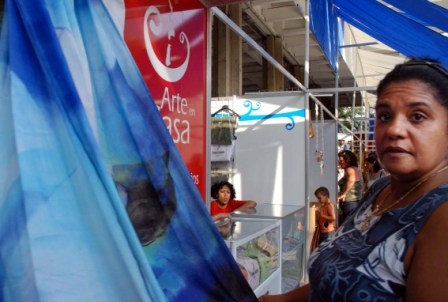





I was happy to attend this event with a friend and his daughter. We were able to purchase educational books and CDs for his 3 year old for very little money in national currency. Other items were way overpriced in CUCs. But, we had a great time out and had a good time looking at the arts and crafts.